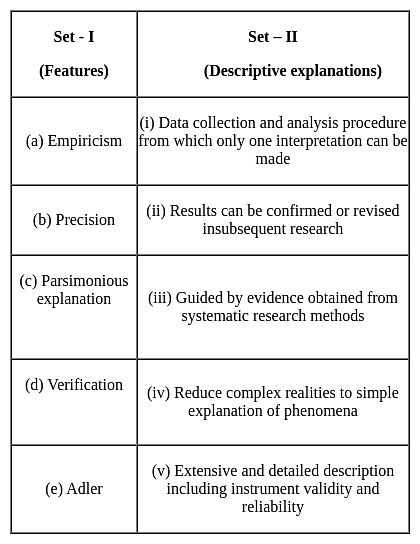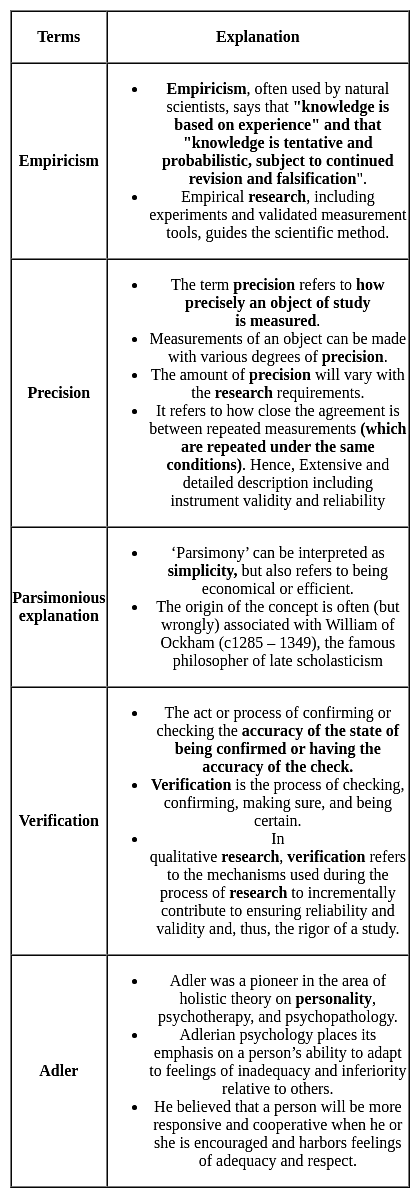UGC NET Paper 2 Education Mock Test - 4 - UGC NET MCQ
30 Questions MCQ Test UGC NET Mock Test Series 2024 - UGC NET Paper 2 Education Mock Test - 4
A special focus on the problems of the examination system of India formed the part of which one of the following reports?
Suppose you are appointed as an acting principal in a school, hence you can not find yourself in a position to administer the strict structures against the teachers who are deliberately passing the time in the class. What would you like to attempt in this condition?
| 1 Crore+ students have signed up on EduRev. Have you? Download the App |
In which of the following countries did the concept of vocationalization of education appear early?
Which of the following is/are not principle(s) of inclusive Education?
(A) Segregated Education
(B) Zero rejection
(C) Appreciation of student diversity
(D) Professional collaboration
Choose the correct answer from the options given below :
Which of the following is true about John Dewey?
I. He considered economy is the basic structure of any society on which other institutions are dependent.
II. He considered transmission of culture, reducing inequality and disparity as major functions to the society.
From the list given below, identify the measures for improving the quality of teacher education:
(a) Reorganization of Course
(b) Introduce the incentives for the teachers
(c) Introducing resources in the schools
(d) Development of positive attitude among pupil-teacher
(e) Emphasis should be given on in-service teacher education
Indicate your answer from the options given below:
Given below are two statements:
Statement I: Often qualitative studies provide too many details of the setting that are investigated.
Statement II: Critics point out that qualitative research suffers from the issue of replication.
In the light of the above statements, choose the correct answer from the options given below:
The two year duration of B. Ed. and M. Ed. Programmes in Indian Teacher Education Institutions was introduced due to NCTE Regulation ______.
Given below are two statements
Statement I: Maximum performance tests are designed to assess the upper limits of the examinee's knowledge and abilities
Statement II: Typical response tests are designed to measure the behaviour and characteristics of examinees.
In light of the above statements, choose the most appropriate answer from the options given
_____ is the capacity to acquire and apply knowledge.
Motivation is defined as a state of the organism in which bodily energy is mobilised and selectively directed towards parts of the.
Which one is the highest order of learning?
What was the relation between Plato and Aristotle?
Statement (A): Hume gave birth to the formation of the Indian National Congress.
Statement (B): Surendranath Banerjea was not at that time, later on, he joined the National Congress.
Choose the correct option.
Which of the following measure(s) was/were taken to promote education during the Swadeshi Movement?
1. Passing of a resolution on National Education by Indian National Congress at the Calcutta session of 1906.
2. Establishment of the National Council of Education to organize education from primary to university level.
3. Establishment of Banaras Hindu University to promote literary education.
Select the correct answer using the code given below.
Below are given some specific features in research as Set - I while their descriptive explanations in Set - II. Match the items of Set - I with that of Set - II and choose correct code :

Choose the correct option.
Statement I: Physical deviations present in children can create issues in the education process of child.
Statement II: Sensory impairment do not create hinderance in the education process of child.
A study was designed to estimate the effect of four different methods of providing feedback to elementary school level students on their spelling ability. At the level of data analysis which of the following statistical technique will be considered appropriate for hypothesis testing in this study?
Which of the following terms is the equivalent of transfer in learning experiments?
Which of the following sequence reflects the correct experiential learning process as described by Kolb?
|
16 docs|120 tests
|


















